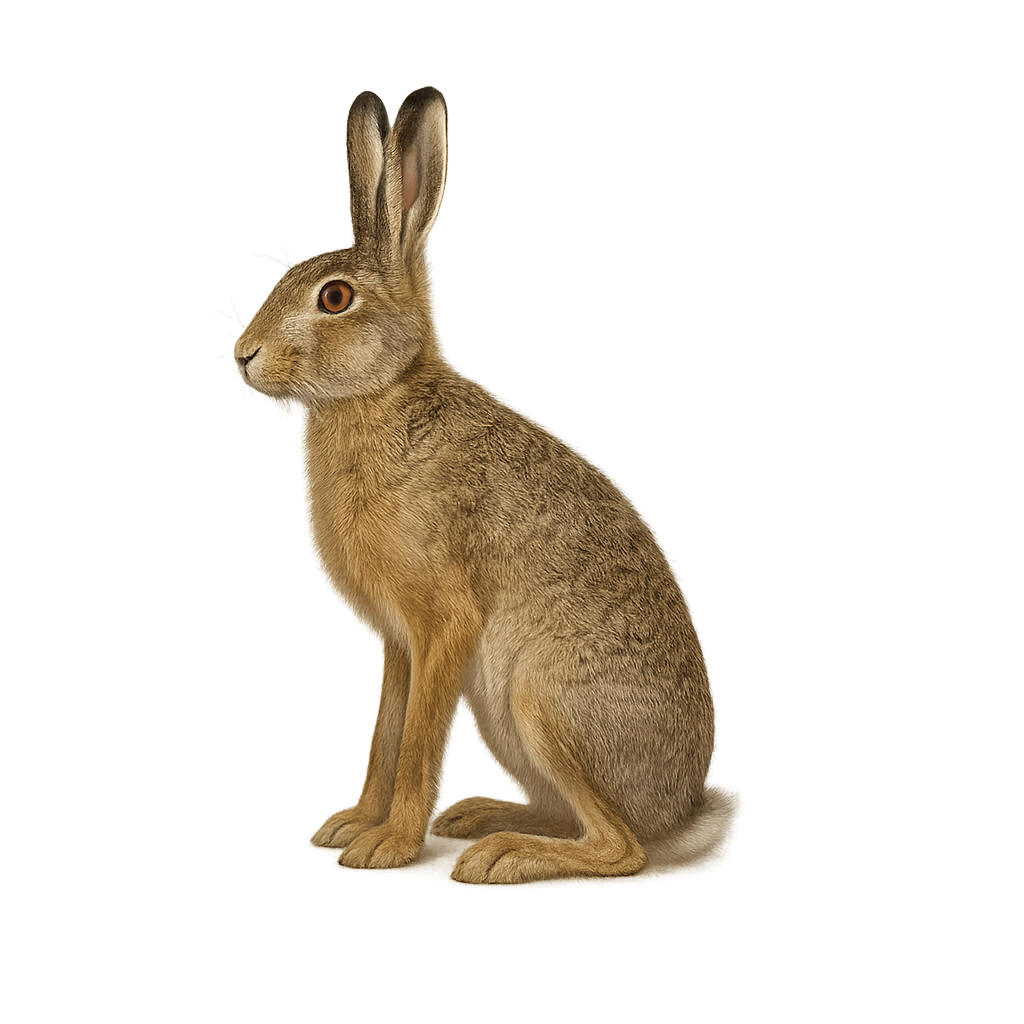Observe and photograph a species in its natural habitat
Learn where and when to observe a species in the wild, how to recognize it in the field, and what habitats it lives in. Get photography tips adapted to its behavior and capture stunning images without disturbing the animal. For full details, open the complete profile in the WildlifePhotographer app.
European hare
Scientific name: Lepus europaeus

IUCN Status: Least Concern
Family: LEPORIDAE
Group: Mammals
Shyness: Suspicious
Safe distance: 30 m
Breeding season / Courtship: 15.01-30.08
Gestation: 42 jours
Births: 15.02-30.08
Habitat:
Meadows, farmland, and open areas
Description:
The European Hare is a large herbivorous mammal, easily recognizable by its long ears and powerful hind legs. It measures about 50 to 70 cm in length, with a short tail and a wingspan of 70 to 90 cm, and weighs between 3 and 5 kg. Its coat varies with the seasons: in winter, it becomes lighter, while in summer, it takes on a brown or gray hue, allowing it to blend effectively into fields and meadows. The European Hare is a solitary and territorial animal, primarily found in open areas such as fields, meadows, and sparse woodlands. It is particularly fast and agile, capable of running at speeds of over 60 km/h when pursued. This hare primarily feeds on grasses, leaves, fruits, and roots. Although the species is widespread in Europe, it faces threats from hunting, habitat loss, and human disturbances.
Recommended lens:
>=400 mm
Photography tips:
Use a telephoto lens to photograph from a distance, respecting the species' discreet nature.
Photograph early in the morning or late in the afternoon, when the soft light highlights the European hare's fur.
Look for it in open habitats such as fields, meadows, and areas with sparse vegetation. Avoid dense forests.
Be patient and discreet to avoid disturbing its natural behavior. Avoid sudden movements and maintain silence.
The European Brown Hare is listed as a species of least concern by the IUCN. However, it is sensitive to habitat loss and human disturbances, especially during the breeding season. It is essential to respect its environment and minimize disruptions.
Ready to take action?
Choose your platform and start your free trial today



